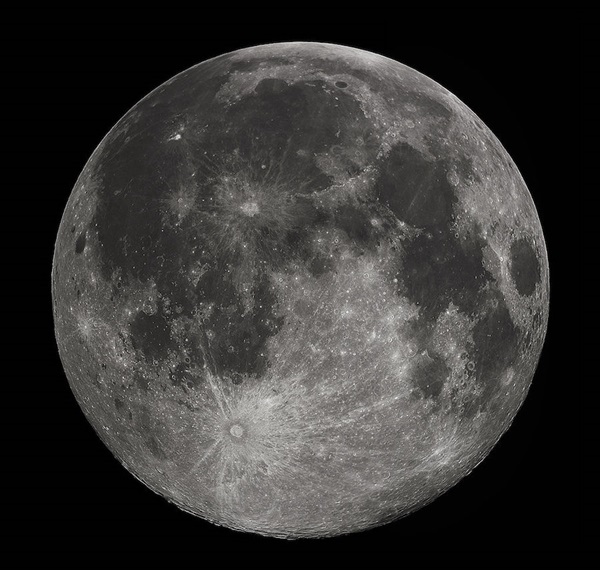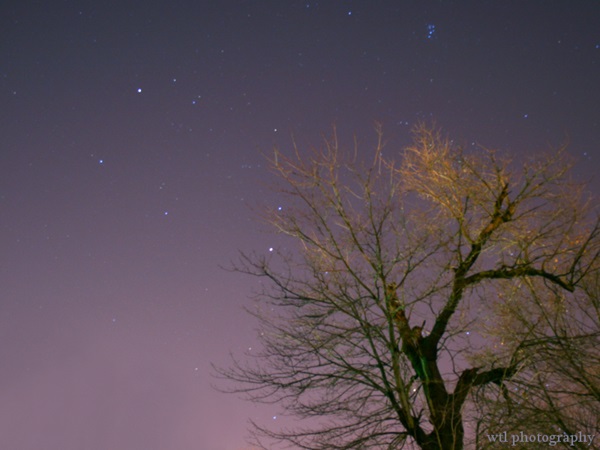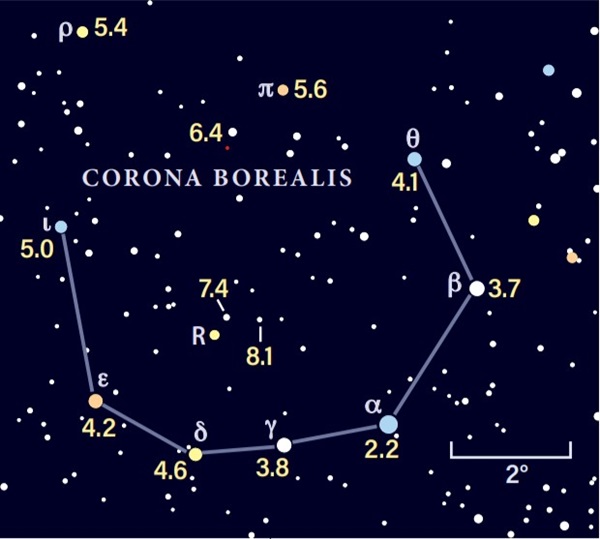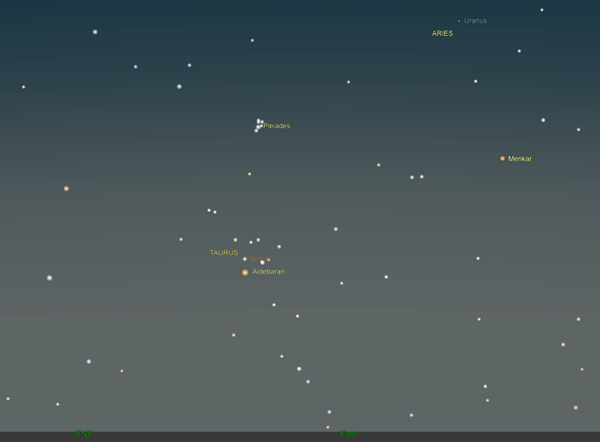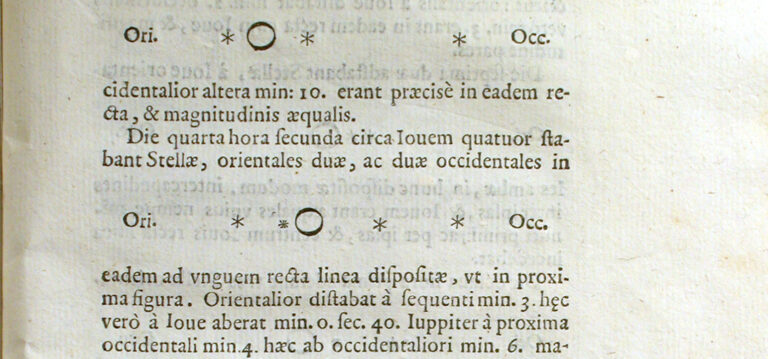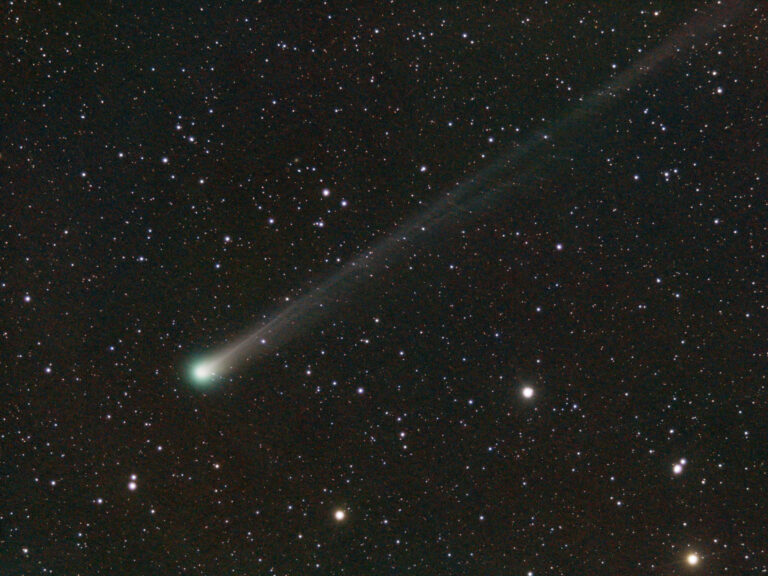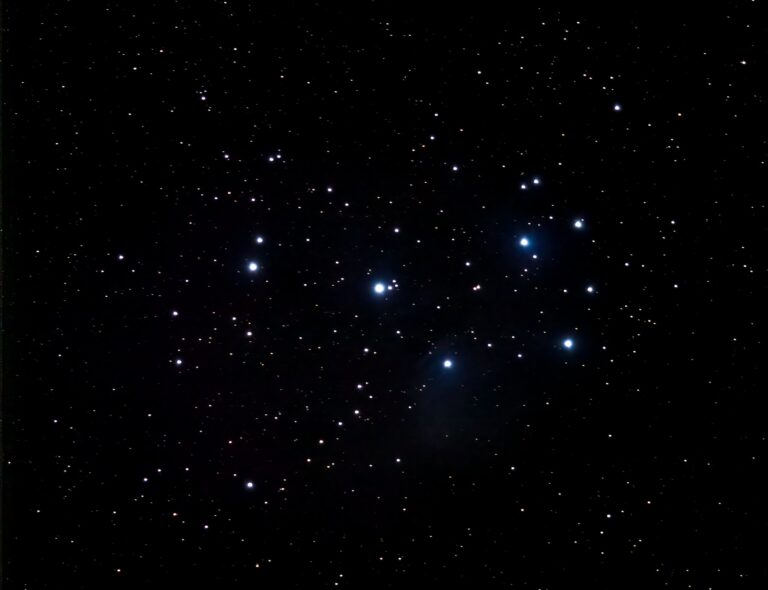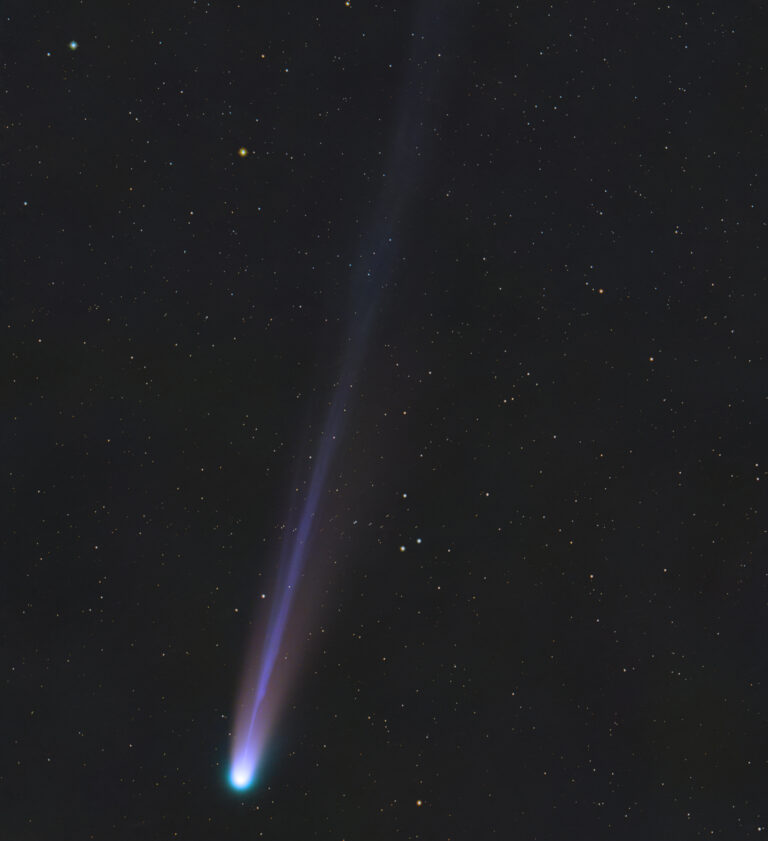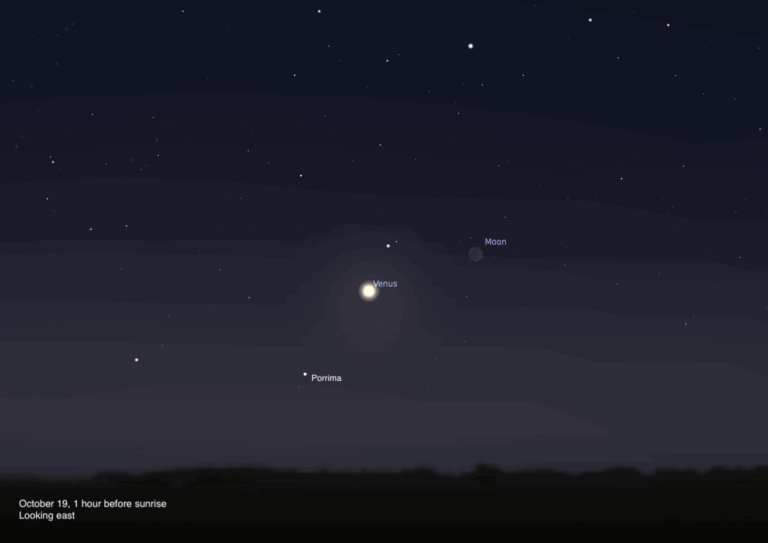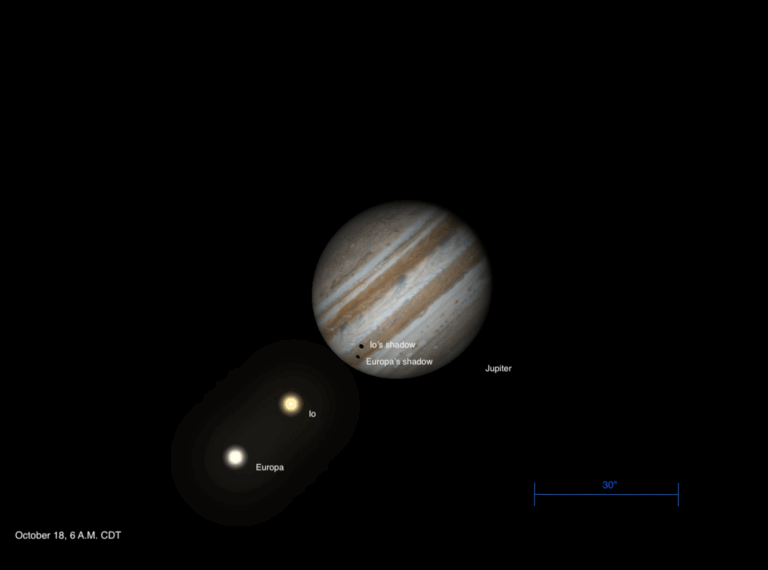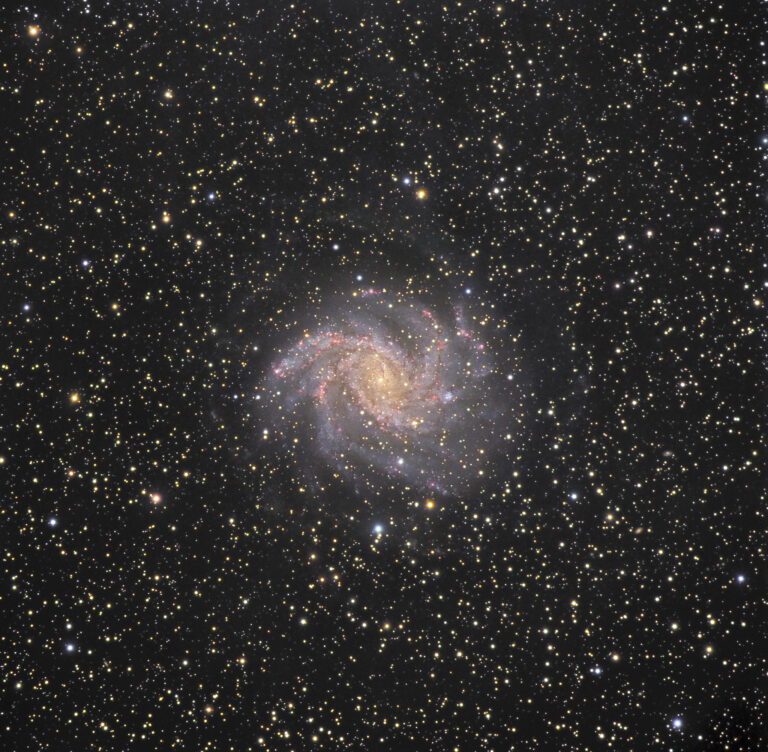Key Takeaways:
The Summer Triangle asterism is on full display tonight, already high above the horizon by the time darkness falls. This famous, easy-to-find group of three stars consists of Vega in Lyra, Altair in Aquila, and Deneb in Cygnus. An hour after sunset, magnitude 0.8 Altair is the lowest of the three, about 23° above the eastern horizon. About 38° to its north is magnitude 1.3 Deneb, and about 24° west of Deneb is Vega — the brightest of the three at magnitude 0.03. The Triangle is visible all night, its stars still well above the horizon by dawn.

Astronomy is pleased to present The Complete Star Atlas, the perfect resource for stargazers of all ages. This practical guide to viewing the night sky is now available, and includes approximately 87,000 stars, 1,200 deep-sky objects, and 24 high-quality star maps. You’ll also find 50 pages of astronomy history, tips, and more from experienced Contributing Editor Michael E. Bakich.
Although Earth’s orbit around the Sun is very nearly circular, its eccentricity of 0.0167 means it’s not perfectly circular. Thus, Earth does have a closest and farthest point from the Sun throughout the year. This morning, Earth reaches aphelion — the farthest point — at 8 A.M. EDT. At this time, our planet lies 94.5 million miles (152.1 million kilometers) from the Sun.
Today is also the 15th anniversary of the Deep Impact probe smashing into Comet 9P/Tempel 1, making the mission the first spacecraft to ever send material flying off of a comet. Tempel was later revisited by the Stardust-NExT mission six years later. Discovered in 1867, the 3.73-mile-wide (6 km) comet is about half the size of the impactor that scientists believe was responsible for the downfall of the dinosaurs.
With a bright Moon in the sky all night, consider taking some time to admire our only natural satellite. On full display are its dark maria, or seas, which are actually ancient volcanic lava flows that smoothed the surface as they cooled. Perhaps the most famous is the Sea of Tranquility, where Apollo 11 first set astronauts on the Moon. It’s located on the eastern side of the Moon (west in the sky), between the Sea of Serenity and the Sea of Fertility. Look also for the huge, rayed craters Copernicus (lunar west) and Tycho (lunar south).
Sunday, July 5
Full Moon occurs this morning at 12:44 A.M. EDT.
A penumbral lunar eclipse will take place overnight from Saturday to Sunday for most observers in North and South America, as well as portions of western Africa and Europe. Penumbral eclipses occur when the Moon passes through Earth’s penumbra — the outer portion of its shadow.
The eclipse begins at 11:07 P.M. EDT on Saturday, July 4, and ends at 1:52 A.M. EDT on July 5. At greatest eclipse, (12:30 A.M. EDT on July 5), the Moon’s face will appear slightly darker to careful observers. It’s worth stepping outside if you’ve got good weather to see if you can spot the effect.
Asteroid Vesta is in conjunction with the Sun at 2 A.M. EDT.
The Moon passes 1.9° south of Jupiter at 6 P.M. EDT. The giant planet, on its way toward its July 14 opposition, clears the horizon about half an hour after sunset, with the Moon following roughly 30 minutes later. They’re now about 4° apart in eastern Sagittarius, and together they gain altitude as the night darkens. Jupiter shines at magnitude –2.7, only 0.1 magnitude fainter than at opposition. Its disk stretches 48″, making it easier to discern detail; come back to the planet once the Moon is farther away to catch any sights the glare may have obscured.
Our satellite is now closing in on Saturn, glowing at magnitude 0.2 about 4.5° east-northeast of the Moon. The gap between them will continue shrinking until tomorrow morning.
Monday, July 6
The Moon passes 2° south of Saturn at 5 A.M. EDT this morning. You can find the pair, along with Jupiter, sinking in the southwest as the sky lightens with the coming dawn. As with Jupiter, you’ll want to return to view Saturn once the Moon’s light has dimmed somewhat, which will allow you to make out greater detail with better contrast against the dark sky. Saturn will reach opposition on July 20 and glow 0.1 magnitude brighter at that time. Its disk currently stretches 19″ across, while its rings span nearly 42″. All three major rings — A, B, and C — are visible, given that the planet’s north pole is tilted 21° toward us.
About an hour before sunrise, you should easily spot the large pentagonal constellation Auriga rising in the east. Its alpha and brightest star, Capella, is about 28.5° northeast of the dipper-shaped Pleiades star cluster (M45). Capella is roughly the same brightness as Vega in Lyra but is a slightly cooler star, glowing a bit more yellow than Vega’s pure white.
Just 43 light-years away, Capella is a multiple-star system. Its two brightest components, Capella Aa and Ab, are closer together than Earth and the Sun; they orbit each other every 104 days. Each is more massive than the Sun.
Just over 30° south of Capella is Venus, which will reach greatest brilliancy by the end of the week.
Wednesday, July 8
Early morning is a great time to seek out the famous Double Cluster in Perseus the Hero. Designated Perseus h and Perseus χ (NGC 869 and NGC 884, respectively), these open clusters are visible under dark conditions with no optical aid, and pop out readily with binoculars or a small scope. Located 11° east-southeast of Navi, the star that forms the middle point of Cassiopeia’s W asterism, each cluster is about 30′ across (the size of the Full Moon) and each is a relatively comfortable magnitude 4.3. Together, they are also cataloged as Caldwell 14.
Of the two, NGC 869 (the western component) is considered slightly richer and more compact than its companion. Both lie roughly 7,500 light-years from Earth and are physically close in space, separated by only a few hundred light-years.
Crane your head back this evening to find Corona Borealis the Northern Crown high in the sky after dark. If you’re having trouble spotting this small constellation, locate bright, golden-hued Arcturus (magnitude –0.05) in the south and scan about 20° northeast of the star. The Crown consists of seven stars that form a wide, curved horseshoe shape between Hercules and Boötes.
This crown also hides a surprise: the recurrent nova T Coronae Borealis, or T CrB. Located 1° southeast of magnitude 4.2 Epsilon (ε) Coronae Borealis, T CrB is a binary star system containing a white dwarf and a red giant star. Over time, the white dwarf pulls material from its companion, until enough has built up on the surface of the dwarf that it sets off a runaway thermonuclear explosion, lighting it up without destroying the white dwarf in the process. Although the system is currently too faint to see without optical aid (around magnitude 10, typically the limit for binocular observing), it’s been known to reach magnitudes of 2 or 3 — visible to the naked eye — during an outburst. And it’s nearly due for one, already experiencing a period of high activity. Knowing that, this may be a good region of the sky to check every so often; and don’t be surprised if a “new” star appears one night, visible as a small “spur” off the curved crown’s shape.
The Moon passes 4° south of Neptune at 3 A.M. EDT. At that time, the planet is nearly 30° high in the southeast, hanging against the stars of Aquarius. The magnitude 7.9 ice giant is an ideal binocular object this month, although the bright nearby Moon may make it a bit of a challenge to pick out this morning in particular. Swing about 16.5° due east of Neptune to spot Mars, whose reddish –0.7 magnitude glow will be much easier to find.
Venus is at greatest brilliancy this morning at 4 A.M. EDT, right around the time when it should be clearing the horizon for U.S. observers at mid-northern latitudes. The planet shines at magnitude –4.7 and sits just 1.25° above Aldebaran, the familiar orange luminary in Taurus the Bull. Lift your gaze another 12° to see the Pleiades. Venus’ disk is 27 percent illuminated and 37″ across. Over the course of the month, its illumination will increase while its size decreases as its orbit takes it farther from Earth.

Our exclusive Sky Guide 2020 is now available! This free downloadable pamphlet contains a month-by-month rundown of 2020’s biggest celestial events, from Mars’ best opposition in years to the return of totality in South America this December. Check out Astronomy’s Sky Guide 2020 now!

